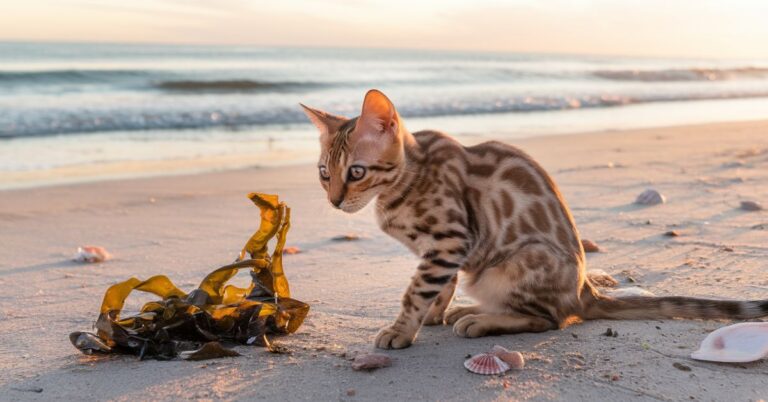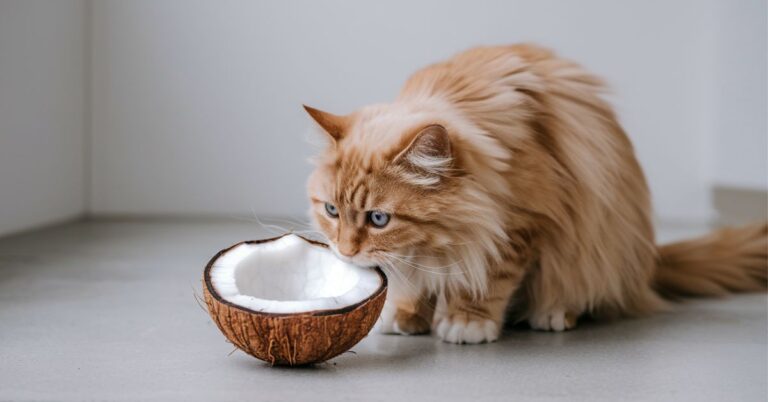Can Cats Eat Figs? Shocking Health Risks of Figs for Cats
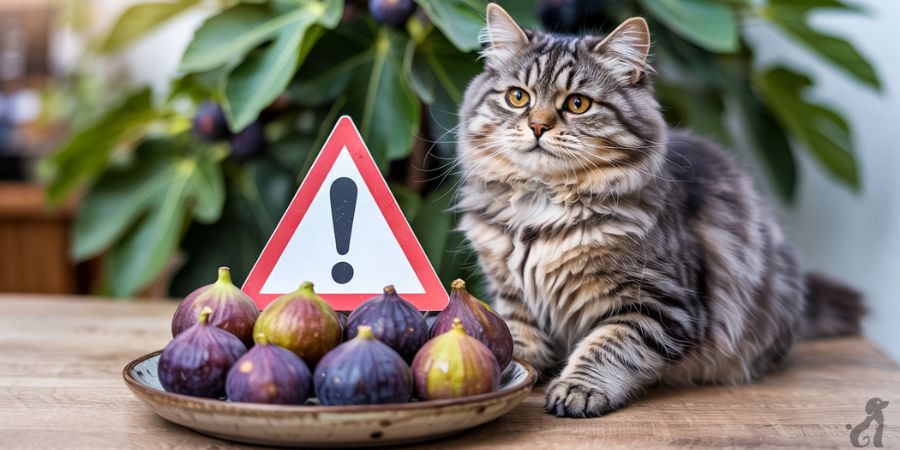
When it comes to treats for pets, many of us love to spoil our cats with gourmet meals. But can figs, a commonly enjoyed fruit, be part of your cat’s diet? While figs are healthy for humans, they aren’t the best choice for your feline.
The sap from the fig tree can be poisonous and harm your cat. Although figs aren’t necessarily poisonous, their high sugar content and carbohydrate levels make them unsuitable for cats, who thrive on animal proteins.
Figs should only be considered a rare treat, if at all, as they don’t provide much beneficial nutrition for cats. Always prioritize pet-safe foods that contribute to your pet’s survival and overall health.
Fig parts & their toxicity levels: Quick comparison
| Part of Fig | Toxic to Cats? | Notes |
|---|---|---|
| Ripe Fruit | Mildly irritating | Only in small amounts |
| Leaves | ✅ Highly toxic | Causes drooling, diarrhea, and mouth discomfort |
| Sap | ✅ Very toxic | Can irritate the skin or pulp of the mouth |
| Roots | ✅ Toxic | Avoid exposure entirely |
Are Figs Safe for Cats?
Figs belong to the Ficus family, a large group of trees and species. While figs might be healthy for humans, they are not safe for cats. The sap of the fig tree contains psoralen and ficusin, which are toxic irritants.
These compounds can cause various issues when a cat comes into contact with the tree or consumes the fruit.
Signs of ficus toxicity
- Drooling
- Diarrhea
- Vomiting
- Irritation in a cat’s skin, eyes, mouth, or gastrointestinal tract.
You might also notice rashes or a loss of appetite in your cat after exposure, making figs a poor choice for feline consumption.
Why Are Figs Toxic to Cats?
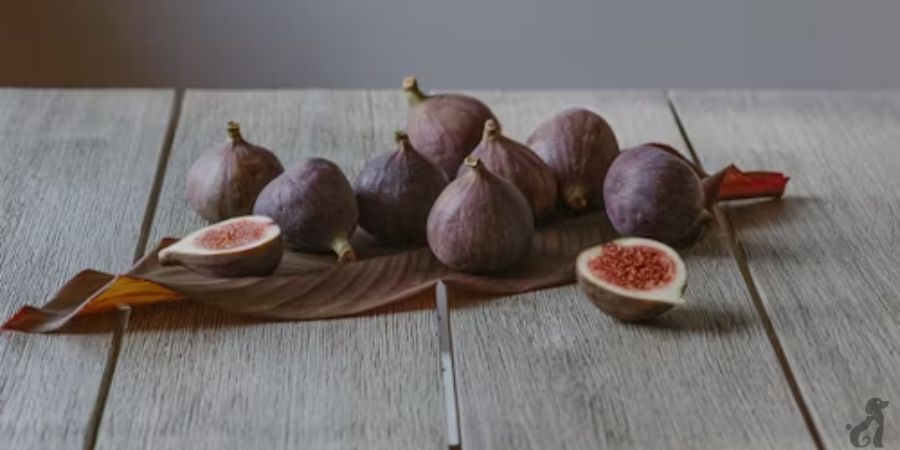
Figs are poisonous to felines due to compounds like psoralens and ficin (harmful compounds) found in the plant sap, leaves, and even the roots. When a cat ingests the fig fruit or comes into contact with the sap, it can irritate the skin or pulp of the mouth.
While fully ripe figs contain lower levels of toxins, unripe fruits have higher dosages of psoralens, making them more dangerous. Even the fig fruit, which is often eaten, can cause problems for cats, especially if it’s not fully ripe.
Are Fig Trees & Fig Leaves Toxic to Cats?

Yes, fig trees and fig leaves are toxic to cats. The sap of the fig tree contains harmful compounds like psoralen and ficusin, which can cause significant irritation when a cat comes into direct contact with the tree or its leaves.
If a cat chews on the leaves, it may experience mouth discomfort and digestive issues in the gastrointestinal tract.
Additionally, exposure can lead to skin rashes and eye irritation, making it important to keep cats away from fig trees. Even casual contact with the sap can result in harmful reactions.
What is Fig Poisoning?
Although figs are safe for humans to eat, they can be toxic to cats. The fig plant, including the leaves and sap, contains a poisonous substance that can cause irritation and even poisoning if ingested.
While fig toxicity in cats is typically low to moderate, it is important to act quickly if you suspect your kitty has ingested any part of the plant. If your cat has been exposed, immediate veterinary care is crucial to prevent further complications.
Figs are a common fruit, grown for centuries in various climates. However, the fig plant, particularly the weeping fig or ficus, can be dangerous to cats when it comes to their health.
These plants are often used as indoor foliage or ornamental plants due to their long, glossy, green leaves, which can be quite attractive.
While these qualities make them desirable for humans, they can be enticing and dangerous for your cat, leading to poisoning and requiring rapid veterinary attention.
Symptoms of Fig Poisoning in Cats
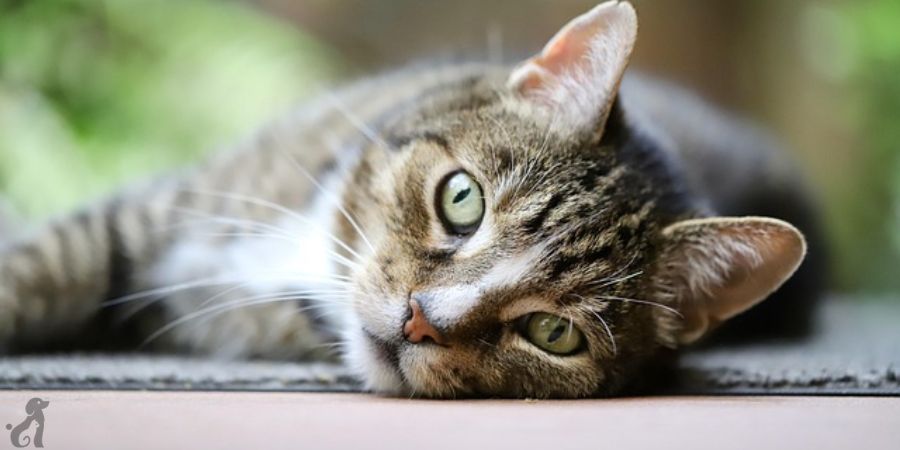
If your cat has ingested a fig, you may notice mild to moderate symptoms of poisoning. These can include vomiting, increased drooling, and watering of the mouth. Other signs include shaking, head twitching, and diarrhea.
Skin irritation, such as open sores, weeping sores, and dermatitis, may also occur, causing discomfort. If these irritation symptoms are present, it’s important to seek veterinary attention to prevent further suffering.
What are the Causes of Fig Poisoning in Cats?
Fig poisoning occurs when a cat ingests any part of a fig plant, including the figs, leaves, or branches. Common fig-producing trees like the creeping fig, weeping fig, and ficus are often found in homes and offices.
These plants, with their long, glossy, green leaves, are popular because they thrive year-round as evergreens. Although fig trees are safe for humans to eat, they are dangerous to cats.
When a cat chews on or consumes part of a fig plant, it can be exposed to harmful toxins like ficin, a proteolytic enzyme (a harmful protein) found in the milky sap of the plant. This enzyme can attack the cat’s cells and DNA, causing various health issues.
Other toxins, like psoralen and ficusin, are also present, especially in the leaves and branches, and can result in digestive distress. These toxic substances are concentrated in the highest concentration in the leaves and branches.
Pet owners must identify and keep plants like fig trees out of reach of their cats. While these plants are known by common names such as creeping fig and weeping fig, they pose a serious risk to pets and should be kept away to prevent poisoning.
What to Do If Your Cat Ingests a Fig?
If you suspect your cat has ingested a fig or part of the fig plant, it’s important to act quickly. Contact your vet immediately for a full examination. The vet may run bloodwork and other tests to check for potential poisoning.

This could involve examining your cat’s skin for sores, and listening to the heart and lungs to assess the situation. If necessary, they might induce vomiting to remove any traces of the fig plant from your cat’s system.
However, do not attempt this on your own, as it can lead to life-threatening complications.
In some cases, the vet might use activated charcoal, an adsorbing agent (a substance that absorbs toxins) that helps bind the toxic substances from the fig and allows them to pass through the digestive system.
The vet will also monitor your cat for any toxicity symptoms, and if needed, hospitalize your cat for observation or administer IV medication. Thankfully, fig toxicity in cats is generally mild to moderate, and most cats recover without long-term issues.
Digestive discomfort like vomiting or diarrhea may persist for a few days, but your cat will usually feel better with a bland diet, such as boiled chicken and rice, or prescription food.
In rare cases of severe ingestion, further medical attention and medication may be required to fully stabilize your cat. Always consult with your vet for the best course of action following the ingestion of a fig.
How to Spot Fig Poisoning in Your Cat?
If you suspect fig poisoning in your cat, the first step is to visit the vet for a thorough veterinary exam. The veterinarian will ask for a complete medical history and physical history, which can provide important details about the symptoms your cat is exhibiting.
Understanding the onset, timing, and whether the symptoms have shown any improvement or worsening is crucial in diagnosing the condition.
The vet will also want to know the approximate time of exposure to help assess how much time has passed since the cat ingested the substance. In suspected cases, this information is critical to understanding the situation.
During the visit, the vet will examine your cat, paying close attention to areas like the mouth, skin, and other signs of distress. They may use special equipment to listen to the cat’s breath and heart sounds, which can provide insights into any poisoning effects on internal systems.
In suspected cases, a blood sample may be taken to test for toxins. The veterinarian will use these observations to determine the severity of the poisoning and consider potential treatment options.
If necessary, they may send the sample to a laboratory for further testing to get definitive results. By gathering all the relevant information, the veterinarian can properly diagnose the poisoning and prescribe the appropriate treatment to help your cat recover.

Treatment of Fig Poisoning in Cats
If your cat has ingested figs, immediate action is necessary. Poisoning can cause distress in your pet, so the first step is to take them to the vet’s office. At the clinic, the vet will begin by stabilizing your cat and monitoring vital signs such as heart rate and breathing.
The vet may use special drugs or IV fluids to help regulate these functions. If the situation is severe, your cat may be admitted for multiple nights for close observation and treatment.
The vet may induce vomiting by using a special solution or hydrogen peroxide, but this should only be done under the veterinarian’s direction, as it can be life-threatening if not properly administered.
The goal is to eliminate the figs from your cat’s system and prevent further harmful chemicals from being absorbed. If vomiting is successful, your cat may feel better immediately. However, the vet will still monitor your cat closely for any side effects, such as aspiration pneumonia (lung infection from inhaling vomit).
If the fig poisoning is detected late, the vet may use activated charcoal to neutralize the toxins in the stomach and digestive system. The charcoal works by absorbing harmful substances, allowing them to pass harmlessly through your cat’s system.
In more severe cases, the vet may need to administer the charcoal via a tube into the mouth or throat to ensure the toxins are neutralized. Throughout this process, your cat’s recovery will depend on the amount of fig consumed and how soon treatment is initiated.
The vet will monitor your pet’s recovery carefully to ensure that the toxic effects of the fig do not cause lasting damage. This is a critical process, and while fig poisoning is rarely fatal, it requires prompt treatment to avoid complications.
How Do Cats Recover from Fig Poisoning?
The recovery from fig poisoning in cats is generally mild if addressed promptly. After ingestion, your cat may experience symptoms like vomiting and diarrhea, but with veterinary attention, they often make a full recovery.
Treatment usually involves special food and medications to help the digestive system recover. Once your cat has stabilized, you can gradually reintroduce their regular diet, giving them the best chance of recovering fully from poisoning and exposure.
What About Fig Newtons?
Fig Newtons are a favorite treat for many, but they are not suitable for your cat. While the cookies contain fig paste made from ripe fruit, which is a source of ficin and psoralen, the other ingredients, like wheat flour, baking soda, and artificial flavor, make them unhealthy for cats.
As obligate carnivores, cats are not built for digesting carbohydrates, especially starchy and sugary foods.
The carbohydrates in Fig Newtons could lead to digestive upset, and their high sugar content can negatively affect a cat’s health. So, despite the fruit in the cookies, it’s best to keep Fig Newtons out of your pet’s diet.
What Other Plants are Toxic for Cats?
When considering plants to decorate your beautiful home, it’s essential to remember that some can be toxic for cats. These plants can irritate a cat’s skin, mouth, or stomach, causing discomfort.
In more severe cases, certain plants can damage vital systems like the kidneys or heart, leading to critical health issues. It’s important to be mindful and choose safe options for your cats, ensuring that no harm comes from the beauty of nature inside your home.
Some of the common offenders include the following:
- Yew
- Castor bean
- Daisy
- English ivy
- Kalanchoe
- Autumn crocus
- Rhododendrons
- Cyclamen
- Oleander
- Marijuana
- Sago palm
- Lily of the valley
- Pothos
- Hyacinth
- Daffodils
- Azaleas
- Tulip
- Spanish thyme
- Amaryllis
- Dieffenbachia
- Day lily
- Chrysanthemum
Conclusion:
When thinking about feeding figs to your cat, it’s essential to understand that while the ripe fig fruit isn’t considered poisonous, it’s still best to avoid giving it to them.
The real concern lies with the fig tree itself, particularly the leaves, roots, and milky sap, which are known to be toxic. If your cat brushes up against or chews on any part of the plant, they may develop itchy skin or red patches.
Ingesting the plant could also lead to digestive problems like vomiting, loose stools, or drooling. Even if the fruit seems harmless, the safest option is to keep your cat away from all parts of the fig plant.
Interested in more about the fruits that cats should avoid? Check out this article on cherries.
Have you ever found your cat munching on a fig? Tell us what happened in the comments!
Frequently Asked Questions
Can cats eat dried figs?
Dried figs are not safe for cats to eat. While fresh figs may be okay in very small amounts, dried figs contain high levels of sugar and fiber, which can lead to digestive upset in your cat. It’s important to monitor what your cat consumes and avoid offering dried fruit, as it could upset their stomach or cause discomfort.
Are fig leaves poisonous to cats?
If fig leaves are ingested by cats, they can become toxic. Fig leaves contain milky sap, which can irritate cats and cause poisoning, with symptoms like vomiting, diarrhea, and drooling.
Are figs okay for cats?
Figs are harmless to humans, but they pose risks to your cat. The fruit, leaves, and sap from fig trees can be toxic and irritating to your cat, causing distress. Also, fig seeds are not suitable for your feline friends.
Can cats eat fig jam?

Fig jam is not suitable for cats. It usually contains high levels of sugar and artificial preservatives, which are not beneficial for your cat’s health. The added sugar can cause digestive issues, and the preservatives may harm your pet’s well-being. It’s important to avoid giving your cat jam or other sugary spreads.
Can cats eat fig rolls?
It’s not recommended for cats to eat fig rolls or processed treats that contain figs.

